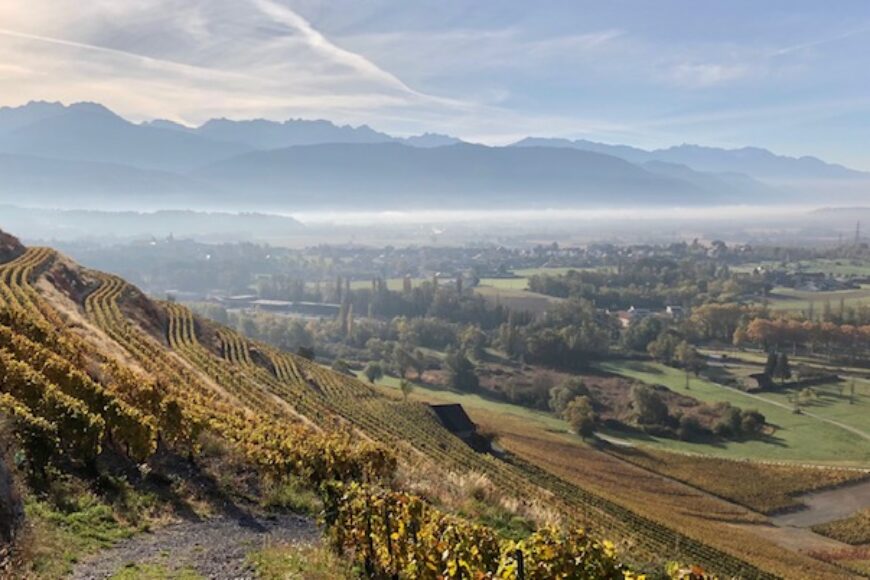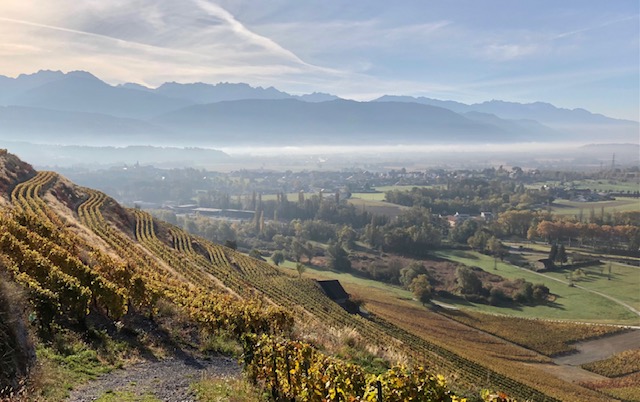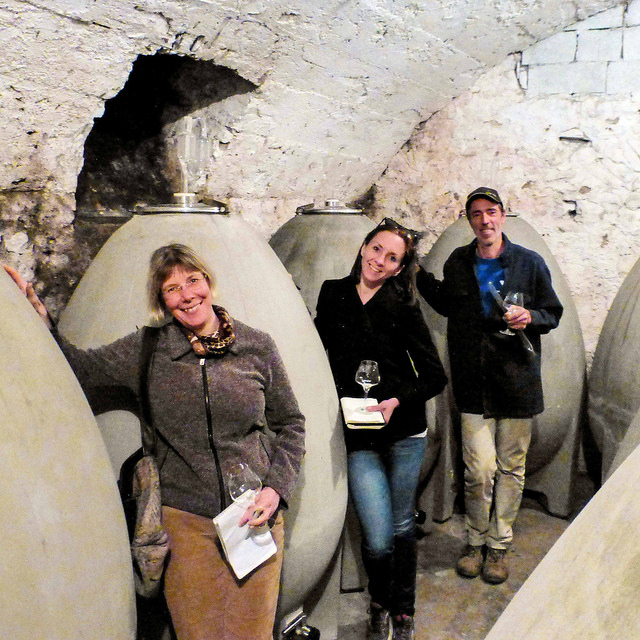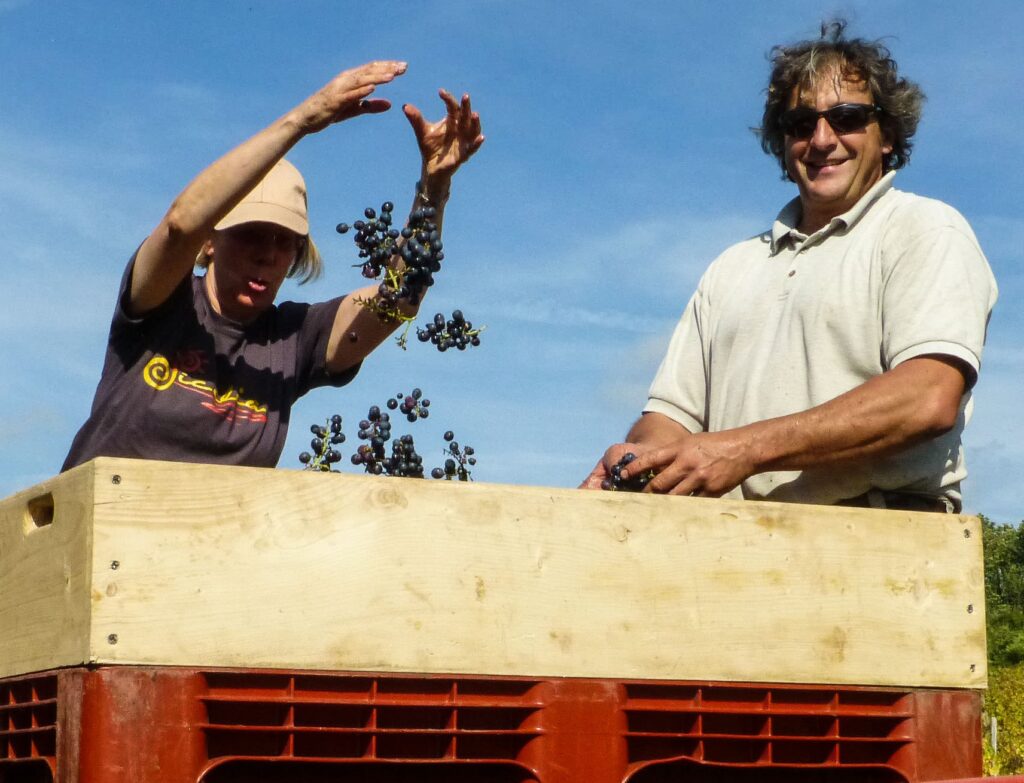Jura and the French Alps: 2021 in Review
Jura and Savoie have been far from spared the ravages of 2021, although there have been glimmers of sunlight amidst the gloom. In some ways the vignerons have been stretched to breaking-point, especially in Jura, by a succession of disasters. Lovers of these regions can only watch with dismay and sympathy, keep drinking their wines and join with the regions in trying to be optimistic for 2022.
As for me, I was kept busy personally, although not without the travel challenges everyone has endured. In spring I moved out of my beloved chalet in Le Grand Bornand, although late in 2022 I will take possession of a new apartment close by – in the meantime, I am London-based. Having written so little on this blog, partly due to these personal commitments and partly due to having articles published elsewhere, it seems right now to summarise the year.
The French Alps: Savoie and Isère go from strength to strength, but lose a beacon of excellence
The fierce spring frosts, which affected the whole of France and several countries beyond, did not spare Savoie or Isère, although the damage was quite varied by sector and some areas did not do too badly. However, later in the season, also as almost everywhere, the endless summer rain meant a big fight against mildew damage and a harvest that required extreme selection and was much reduced compared with average volumes.
Covid restrictions meant several tastings and events were put on hold once again but in July the Jour Fruit tasting event, which groups together many top vignerons, organic and not, was held by dividing producer stands across several cellars in Chignin. I could not attend but by all accounts it was a big success and I am hoping very much that the trade-only version will go ahead on 7th March 2022, as planned. Follow Jour Fruit’s Facebook page for details.
I did, however, manage a full day visit to Chignin, to inspire me for my first article for The Drop, the magazine from Pix, a new online wine platform. You can find the article and subsequent ones on my Pix profile page at https://www.pix.wine/the-drop/author/wink-lorch/.
I also wrote in The Drop about the nearby little Isère region, an area I included in my Wines of the French Alps book and one which regularly impresses me with its energy and innovation, and its wines too of course.
The world of Savoie and far beyond was shocked and much affected in June by the death of Dominique Belluard in Ayze, the beacon of excellence I refer to in the sub-heading above. Below are the opening paragraphs of an article I wrote soon after his death for Wine Searcher, a piece that I found immensely hard to write. I can now add that the fruit from the 2021 harvest was taken on by various vigneron friends from Savoie, Jura and beyond. Currently it is looking unlikely that Domaine Belluard will continue, but that is far from certain – the family is trying to find a way to keep the vineyards and winery together, but it is unofficially for sale, I believe.
Lord of the Gringets: An Appreciation
At the age of just 55 the winemaker Dominique Belluard of Savoie ended his life last week – a tragedy for his family, his close colleagues, friends and wine lovers around the world.
For many of the latter, Belluard put the Savoie wine region on the map, though I do not believe this was ever his intention. Belluard’s aim during more than 30 vintages on the family estate was to work out how it was possible to produce world-class wines from the vineyards of his Haute-Savoie village Ayze, most particularly using the local Gringet grape, grown nowhere else. He undoubtedly succeeded, but at great cost to himself and his family.
Dominique Belluard most wanted to please his father Albert, who died in 2011, a loss which affected him greatly. Albert, born near Annecy, had moved to Ayze (sometimes spelt Ayse, as the Belluard family spell it) with his parents in 1947 to farm – they had dairy cows, apple and pear orchards and a small vineyard.
There was a long and noble history of vineyards in Ayze but lying between Geneva and Chamonix this is true mountain terroir and the vineyards had almost died out. The climate was in the past more difficult for ripening than the main Savoie areas near Chambéry, around 60 miles to the south, partly due to being higher altitude. And weather hazards, like frost and particularly hail have always been a problem, now an increasing one.
Please read the rest of this article at https://www.wine-searcher.com/m/2021/06/lord-of-the-gringets-an-appreciation.
Jura: The worst growing season in living memory – terrible losses in every sense, but resilience
There is no way to phrase this in a happy way: 2021 went from terrible to catastrophic for vignerons in the whole of Jura, not one sector was spared although as always some areas did better than others. The spring frosts were worse than ever, there was hail damage in various areas, notably in the Arbois AOC, Château-Chalon suffered a landslide due to heavy rains, affecting vineyards belonging to Domaine Macle and Domaine Crédoz, and mildew also ran riot with the exhausting summer rains. Some domaines did not even bother to harvest for themselves, offering what was left to négociants, others did what they could with the ten or 20 percent of good grapes that were left.
In the midst of all this, tragically in May Pascal Clairet of Domaine de la Tournelle, husband to Evelyne and a mentor to so many younger organic and natural winegrowers, took his own life. On my much ignored (by me) Jura Wine blog I paid tribute to Pascal and also to the redoubtable Bacchus or Lucien Aviet, who died in the same month.
Resilience was on show at the Paris tasting of the organic group of which Pascal was such a key member, Le Nez dans le Vert in early November – despite the lack of wine, over 30 vignerons, including Evelyne Clairet, made their way to Paris and were given much support by the Paris wine trade. There are several new vignerons, who are part of the group and showing great promise. The region continues to evolve hugely. The group has even welcomed the perceived outsider, Domaine du Pélican, as part of it – they are exemplary biodynamic proudcers, after all. Earlier in the year I had enjoyed tasting samples of their 2019 wines with a Zoom session in London. My update on Pélican was also published on Wine-Searcher.
On the subject of outsiders, rumours had been circulating since April about Domaine Ganevat being taken over. I knew there to be truth in the rumours but was unwilling to engage in sharing what was not official news until the sale was finalised in autumn. I decided to put forward a positive stance on this, having spoken with Jean-François and his sister Anne Ganevat about the sale, and also with the buyer Alexander Pumpyanskiy in a long phone interview. Since my article, the buzz has quietened, which I consider a success. Here is the introduction and I hope you might read the rest:
From Languedoc to Jura with Love
After months of rumors, Jean-François Ganevat has confirmed that his estate and négociant business was sold in September 2021, but that he and his sister Anne are to stay on. The buyer is Alexander Pumpyanskiy, who lives in Geneva, Switzerland.
Pumpyanskiy is son of the Russian steel-industry magnate Dmitry Pumpyanskiy and the family has owned Prieuré Saint-Jean de Bébian in the Languedoc since 2008. They have invested hugely into the restoring of the property, converting the vineyards to organics and biodynamics, building a new winery, and creating a wine tourism center with a Michelin-starred restaurant and small hotel.
Working in finance and for the family business, Pumpyanskiy took on overall responsibility for Bébian 10 years ago when he was still in his early 20s, working closely with Bébian’s director Benoit Pontenier; he has been looking to acquire another estate for some time.
Jean-François Ganevat, who took over from his father in 1998 after working in Burgundy, transformed their small family wine estate in a sleepy hamlet of the southern Jura, to become one of a handful of cult Jura estates.
With 13 hectares of vineyards run biodynamically, Domaine Ganevat and its associated négociant business offer a huge range of wines, admired by traditionalists and natural wine lovers alike, and sold across the globe on allocation. For certain Jura cuvées, high demand has resulted in massive price hikes on the secondary and tertiary markets, unimaginable even five years ago.
Read the rest of this article at https://www.wine-searcher.com/m/2021/11/from-languedoc-to-jura-with-love
Jura and Savoie on the Screen
In August I hosted a couple of TV programmes for the new specialist wine television 67 Pall Mall TV. I was joined by Rosemary George MW, who herself was one of the first in the modern era of British wine writing to write more than a couple of sentences about Jura and Savoie in her ground-breaking book French Country Wines (Mitchell Beazley, 1990). In both programmes – one on Jura whites and the other an introduction to Savoie wines – it was a privilege to taste and chat with Rosemary about each region and taste a cracking selection of six wines sourced from UK importers.
To re-watch these one-hour programmes go to Catch Up at https://www.67pallmall.tv/page/homepage and look for the Expert Series – you can even buy the samples still. Although only launched six months ago, you will already find a huge number of very well-produced wine programmes to watch on 67 Pall Mall TV and the live shows continue.
And here is another tip for watching, something I settled down to watch only earlier today. Back in 2014, Jura’s Labet family were filmed for an independent French TV documentary by Laurence Guérault. Recently, the Labet’s UK importer has revived the film and added UK sub-titles. I had never watched it originally but was captivated by the film, which in a gentle manner shows not only the Labet’s philosophy, but also the atmosphere of the Jura wine region itself, so very well. Vinetrail have kindly made it available for all to watch on their website – you will find it at the bottom of this page – https://www.vinetrail.co.uk/journal/a-small-place-on-earth. Along with some of the Labet employees, the whole family feature in the film. Sadly, the lovely Josie Labet, wife of Alain and mother to the three Labet siblings, died in late 2020. I recommend putting aside 52 minutes of your time to watch this documentary and thank Vinetrail for sharing it.
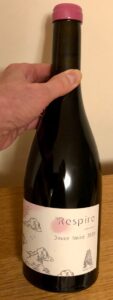 Finally, it is time to head towards Midnight and 2022. I’m opening a fun wine tonight from a Savoie newcomer, Ludovic Archer, written about in my article for The Drop. Having caught a cold a few days ago, confirmed not Covid, my sense of smell is just recovering, and my energy slowly returning. The grape, Douce Noire, is considered rare, except that this native Savoyard is much planted in Argentina under the name Bonarda. The name of the cuvée, Respire, seems highly appropriate and the wine is only 9.5% alcohol so may see me through the evening… Bubbles don’t seem the right choice tonight, but let us hope we all have more to celebrate in 2022.
Finally, it is time to head towards Midnight and 2022. I’m opening a fun wine tonight from a Savoie newcomer, Ludovic Archer, written about in my article for The Drop. Having caught a cold a few days ago, confirmed not Covid, my sense of smell is just recovering, and my energy slowly returning. The grape, Douce Noire, is considered rare, except that this native Savoyard is much planted in Argentina under the name Bonarda. The name of the cuvée, Respire, seems highly appropriate and the wine is only 9.5% alcohol so may see me through the evening… Bubbles don’t seem the right choice tonight, but let us hope we all have more to celebrate in 2022.
In 2022, please support the growing band of wine book self-publishers by buying the fruits of our labours direct. Both my books are still available to buy for delivery around the world directly from this website and shipping costs are subsidised. Readers/potential buyers in the US especially should note that shipping is currently low, at European rates, as while I am in London, I get cheaper shipping rates than when I have to ask my delivery manager brother to handle shipping. E-books are also available.


